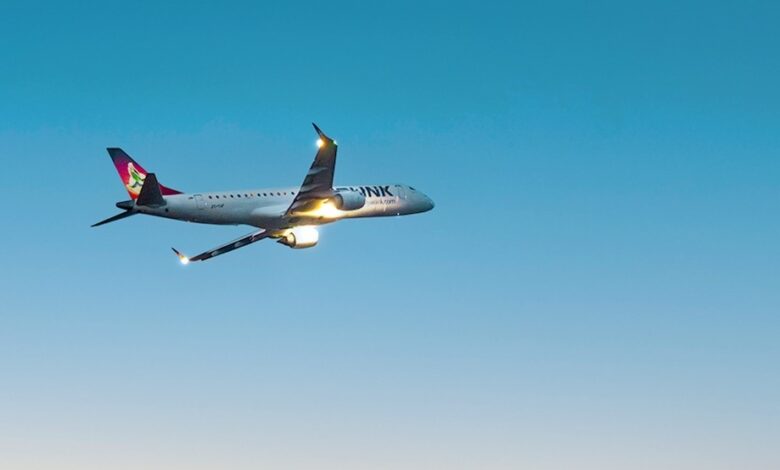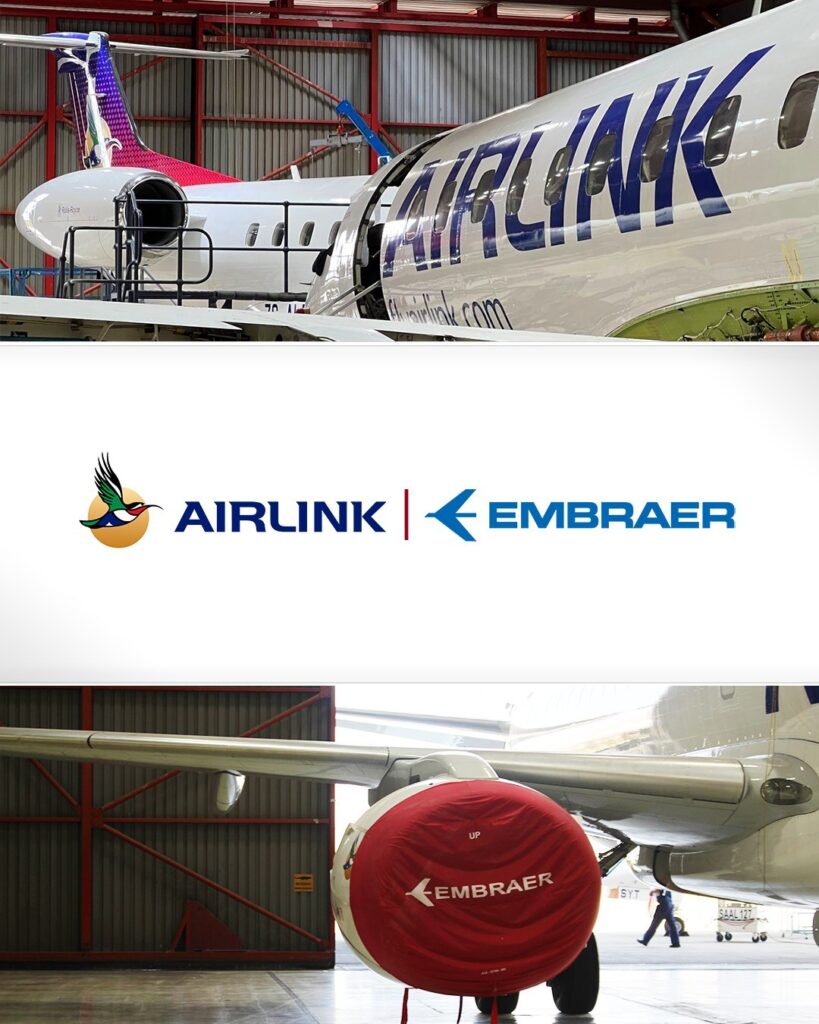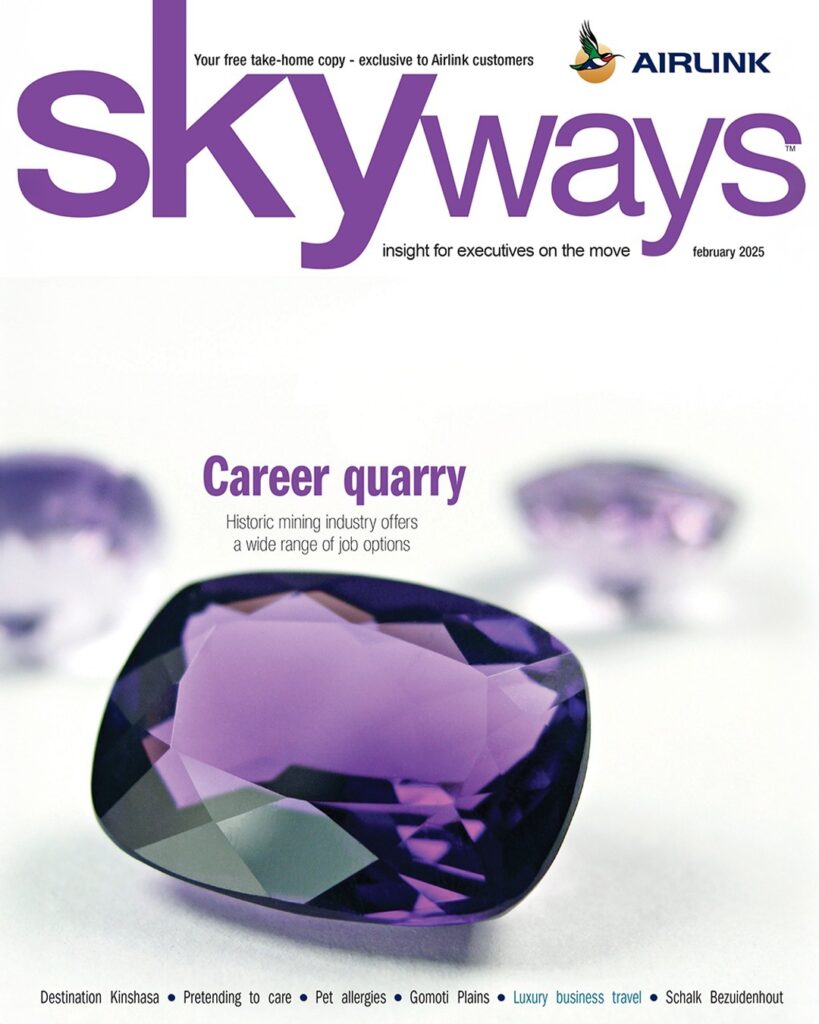Airlink’s Ascent: How Strategic Vision and Adaptability Made It South Africa’s Leading Airline

Airlink’s Ascent: How Strategic Vision and Adaptability Made It South Africa’s Leading Airline. In the competitive world of aviation, standing out requires more than just offering flights—it requires a unique blend of strategic marketing, adaptability, and a focus on delivering exceptional service. Airlink, a regional airline in South Africa, has successfully positioned itself as the leading airline in the country, with an impressive track record of growth and innovation. From its humble beginnings to its current prominence, Airlink’s journey has been shaped by its resilience in navigating challenges, its understanding of the market, and its commitment to customer satisfaction.
This article explores the key strategies, milestones, and turning points that contributed to Airlink’s rise, providing actionable insights for aspiring entrepreneurs looking to build successful brands.

The Early Days: Pioneering Regional Travel
Airlink was founded in 1992 by its current CEO, Rodger Foster, initially as a regional airline that sought to bridge the gap between South Africa’s cities and remote areas. The company began by offering flights between Johannesburg and smaller, underserved regions, catering to both business and leisure travelers. Its focus was on providing a reliable, comfortable, and accessible air travel option for South Africans.
In the early years, Airlink faced the challenge of competing with well-established players like South African Airways. However, instead of trying to directly compete with the national carrier, Airlink focused on carving out a niche for itself by offering domestic and regional routes that were often neglected by larger airlines. This strategic focus allowed the airline to become a preferred choice for those in smaller towns or rural areas who wanted a quicker, more efficient way to travel.
Key Lesson for Entrepreneurs: Focus on finding a unique niche in the market where you can provide value. Understanding where the competition is lacking can open up opportunities to build a strong, loyal customer base.
Strategic Partnerships: The Key to Expanding Reach
A pivotal moment in Airlink’s growth came in 1997 when the airline entered into a key strategic partnership with South African Airways (SAA). This partnership allowed Airlink to become the regional feeder for SAA, expanding its reach and visibility across the country. This collaboration also gave Airlink access to a much larger customer base and the ability to offer connecting flights to international destinations.
This partnership was instrumental in positioning Airlink as a trusted and reliable airline, benefiting from the credibility of South African Airways. As part of the agreement, Airlink was able to access SAA’s extensive network of international destinations, enhancing its service offerings without having to directly compete on long-haul routes.
In 2020, Airlink separated from SAA and became an independent airline once again, marking a new chapter in its journey. Despite the challenges posed by the COVID-19 pandemic, this move allowed Airlink to sharpen its focus on regional and domestic routes, further strengthening its position as the leading domestic carrier.
Key Lesson for Entrepreneurs: Strategic partnerships can be a powerful tool for growth. Collaborating with established players in your industry can help you access new markets, resources, and customers.

Resilience Amidst Crisis: Navigating the COVID-19 Pandemic
When the COVID-19 pandemic hit in 2020, the aviation industry was one of the hardest-hit sectors. Airlink, like many other airlines, faced unprecedented challenges, from strict travel restrictions to reduced demand for flights. However, Airlink’s ability to adapt quickly and pivot its operations played a crucial role in its resilience.
Rather than retreating, Airlink focused on maintaining a lean operation and quickly adapted to the changing landscape. The airline implemented stringent health and safety protocols, which helped restore passenger confidence. Moreover, Airlink leveraged its regional expertise, focusing on domestic routes as international travel remained restricted. By doing so, the airline continued to provide essential services to its customers, including repatriation flights and cargo transport, during a time of uncertainty.
This ability to stay agile during a crisis demonstrated Airlink’s resilience, ensuring that it would emerge stronger once the industry began to recover.
Key Lesson for Entrepreneurs: In times of crisis, resilience and adaptability are critical. Being able to pivot and adjust your business model to meet the changing needs of your customers can make all the difference in overcoming adversity.
Innovating the Customer Experience: Building a Strong Brand
Airlink has always placed a strong emphasis on providing a high-quality customer experience. Whether it’s through punctuality, comfort, or customer service, the airline has built a reputation for reliability and professionalism. This dedication to the customer experience has been a key part of its success in the competitive aviation market.
Airlink also consistently invested in fleet modernization, ensuring that its aircraft were equipped with the latest technology to provide a safe and comfortable flight experience. The airline’s attention to detail in service, from check-in to baggage handling, has contributed to the strong loyalty it enjoys among travelers.
Furthermore, Airlink has made significant strides in its digital presence, offering customers an easy-to-use website and mobile app for booking flights and managing their travel. This focus on digital innovation has helped streamline the customer journey and enhanced the airline’s overall value proposition.
Key Lesson for Entrepreneurs: Never underestimate the importance of the customer experience. Whether through service, technology, or convenience, ensuring that your customers have a seamless and positive experience can build long-term loyalty.

Expanding the Network: Reaching New Heights
Over the years, Airlink has consistently expanded its network of routes, both domestically and regionally, becoming one of the largest privately owned airlines in South Africa. By focusing on underserved regional airports and routes, Airlink has gained a competitive advantage in reaching markets that larger airlines have overlooked.
The airline has also made strategic investments in its fleet, continually adding new aircraft to ensure capacity and efficiency. This expansion strategy has allowed Airlink to tap into growing demand for regional air travel, connecting South Africa’s cities and towns with other African destinations.
In 2022, Airlink added more regional and international destinations to its roster, further establishing itself as a leader in the Southern African aviation market. With a growing fleet and increasing routes, Airlink is on track to solidify its position as South Africa’s top airline.
Key Lesson for Entrepreneurs: Growth is crucial, but it must be managed strategically. Expanding into new markets and diversifying your offerings will help you remain competitive and open up new revenue streams.
The Takeaway: What Aspiring Entrepreneurs Can Learn from Airlink
- Find Your Niche: Airlink focused on providing regional flights in underserved areas, which allowed it to build a strong base of loyal customers. Identify gaps in the market and cater to those needs.
- Leverage Strategic Partnerships: Airlink’s partnership with South African Airways allowed it to expand its reach and enhance its credibility. Collaborating with other companies can open up new growth opportunities.
- Adaptability is Key: The airline’s ability to quickly adapt to the challenges posed by COVID-19 demonstrated the importance of resilience in business. Be prepared to pivot when necessary to meet the needs of your customers.
- Customer Experience Matters: Building a reputation for excellent customer service can lead to long-term loyalty and brand advocacy. Focus on delivering a seamless experience from start to finish.
- Expand Thoughtfully: Expansion should be driven by both demand and careful planning. Adding new routes, destinations, or services can help your business grow and stay ahead of the competition.

Conclusion: Airlink’s Flight to Success
Airlink’s journey from a regional airline to South Africa’s leading domestic carrier is a testament to the power of strategic thinking, resilience, and customer focus. The airline’s ability to adapt to market demands, build strong partnerships, and innovate its services has allowed it to soar to new heights.
For aspiring entrepreneurs, Airlink’s story offers valuable lessons on the importance of finding a unique market niche, building lasting relationships with customers, and embracing adaptability and innovation. With a focus on these principles, you too can build a successful and resilient brand.


